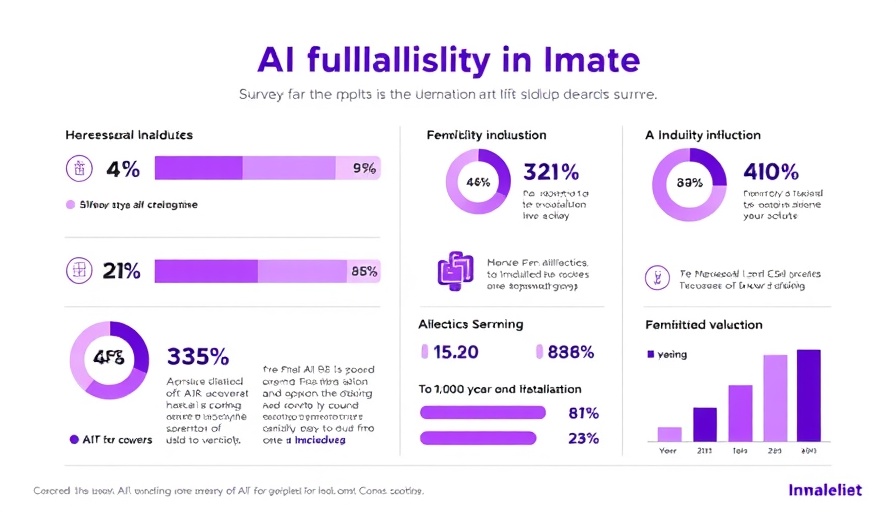
The Rapid Embrace of AI in Construction and Design
As artificial intelligence transforms landscapes around the globe, few industries are standing still. The construction and design sectors, in particular, are at the forefront of this technological shift. According to the inaugural 2025 U.S. Houzz State of AI in Construction and Design report, over 700 surveyed U.S. businesses reveal that the adoption of AI tools is not just a trend but a necessity for enhancing operational efficiency and creativity.
Awareness and Adoption: The Statistics Behind the Trend
The findings of the report showcase that a remarkable 69% of construction and design professionals are now familiar with AI technology. This knowledge base underlines a significant departure from earlier perceptions, where only a fraction of industry professionals had exposure to the capabilities of AI. Today, merely 8% have had no exposure to AI technologies, highlighting a trend where knowledge is preceding implementation.
Streamlining Operations with AI
More than a third of those surveyed are actively integrating AI solutions into their daily workflows. From project management to design conceptualization, AI is enhancing productivity.
Some examples of operations streamlined by AI include:
- Design Assistants: Tools that help design professionals create faster by generating multiple design iterations based on initial concepts.
- Project Management Software: AI solutions that offer predictive analytics to foresee potential project delays and resource allocation.
- Customer Relationship Management: Systems using AI to tailor client interactions and strengthen client relationships.
The Need for Training: Bridging the Knowledge Gap
Despite the enthusiasm for AI, the report notably emphasizes the need for accessible training resources. As industry pros explore these new tools, they often find that understanding the technology's potential is just the beginning.
With 38% of respondents noting a desire for tailored training solutions, it’s clear that the path to successful AI integration remains rocky for many. Training that boosts familiarity with AI tools and fosters innovation will be key to ensuring the industry's smooth transition.
Trustworthy Tools: What Professionals Are Looking For
Hands-on expertise isn’t the only factor in the successful implementation of AI. The construction and design professionals are also keen on employing trustworthy AI solutions that align closely with their unique operational needs. This reflects a demand for AI tools that not only yield efficiency but also build confidence among users.
Future Predictions: What Lies Ahead?
As we look forward, the integration of AI in construction and design appears to be not just an advantage but an essential component for staying competitive. The industry is expected to continue evolving alongside technology innovations, with many experts forecasting a trend where construction projects become increasingly data-driven.
With innovations in machine learning and enhanced algorithms, the next few years could witness a shift towards smarter tools that offer a deeper understanding of user preferences, potentially revolutionizing client engagement and project management.
Relevance to California Homes: A Local Perspective
In California, where housing demands are high and the competitive landscape is fierce, the need for efficient practices is particularly pressing. With escalating construction costs and a significant backlog in housing projects, leveraging AI is not merely advantageous; it is vital to streamline processes, allocate resources more effectively, and deliver quality outcomes.
Employing AI can lead to better project timelines, effective design solutions, and ultimately more satisfied homeowners.
Conclusion: Embracing the Future
The findings from the Houzz report underscore a pivotal shift within the construction and design industries, revealing not only a robust rate of adoption and familiarity with AI tools but also highlighting crucial areas for improvement, such as training and the development of reliable tools tailored to industry needs. As professionals embark on this new journey into AI, understanding that ongoing learning and adaptability are paramount will keep them at the forefront of innovation.
As the technology unfolds, staying informed and prepared will empower California’s builders and designers to not only survive but thrive in this new landscape, ensuring quality service to homeowners and redefining industry standards.
 Add Row
Add Row  Add
Add 




 Add Row
Add Row  Add
Add 

Write A Comment